TechRadar Verdict
Why hire a print lab service when you can print better photos at home? Canon’s professional-grade printer uses ten long-life pigment inks to turn out striking photos on A3+ paper and banners.
Pros
- +
Wide color gamut
- +
Borderless A3+ prints
- +
Ten long-lasting inks
- +
Two input trays
Cons
- -
No auto-duplex or touchscreen
- -
Slow to print text
- -
Small ink cartridges
- -
No option for paper rolls
Why you can trust TechRadar
The Canon imagePROGRAF PRO-310 is an expensive and feature-light print-only inkjet with all the emphasis on print quality. It’s large enough to take 13” x 19" A3+ sheet paper, but small enough to share your desk.
There’s no touchscreen, no auto-duplex mode and the print speed is slower than its nearest rival, the Epson SureColor SC-P600. However, with ten cartridges delivering Canon’s industry-leading pigment ink through 7,680 nozzles, this could be one of the best large format printers enthusiast and professional photographers can buy.
Canon imagePROGRAF PRO-310: Design and build
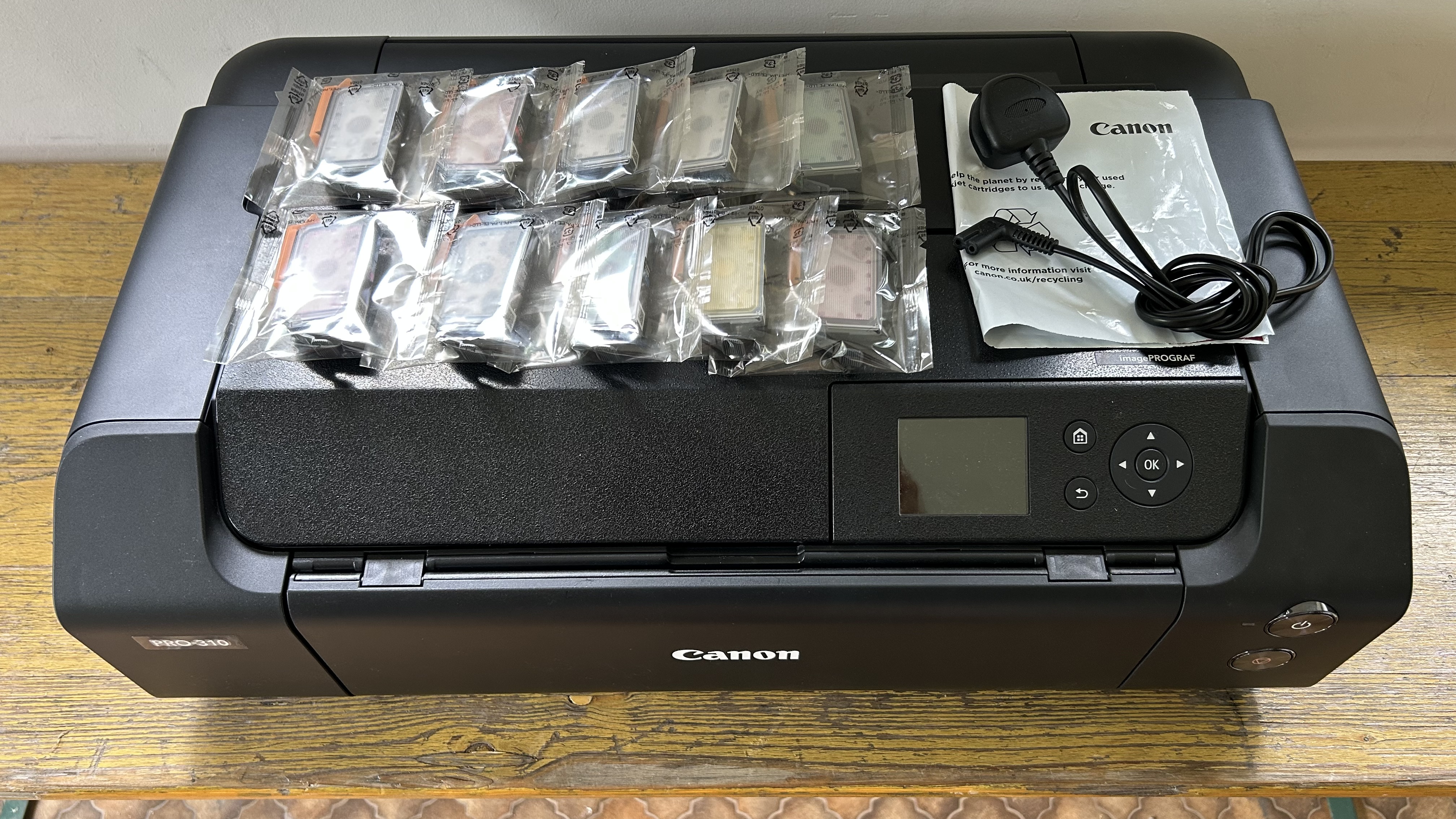
Type: color inkjet photo printer
Functions: Print only
Connectivity: Ethernet, USB, Wi-Fi
Data storage slots: none
Print speed: A3+ in 4min 15sec
Max paper size: A3+, 13” x 19"
Print quality: 4,800 x 2,400 dpi
Memory: 1GB
Apple AirPrint: yes
Consumables included: 10 x 14.4ml cartridges
Dimensions/Weight: 639 x 379 x 200 mm (WxDxH)/31.7lb/14.4kg
The torpedo-shaped Canon imagePROGRAF PRO-310 looks very much like a scaled down version of the rugged and uncompromising Canon imagePROGRAF PRO-1100, which of course it is. While the flagship model takes A2+ sheets, its baby brother takes paper half that size and is cheaper by about a third. The compact design is the same, with two paper inputs and sturdy paper feed trays that fold neatly away to leave a compact unit that’s only 14 inches high and 19 inches deep. But be warned, with the flaps extended those dimensions grow to 16 inches and 33 inches.
The top-loading tray can hold up to 100 sheets of A4, or 50 sheets of A3 plain paper, while the rear-loading manual feed is for single sheets of any size up to A3+. The ten inkjet cartridges are tucked away inside and can be accessed somewhat awkwardly by lifting the printer’s bonnet. By necessity, the cavity and the cartridges are much smaller than those of the Canon imagePROGRAF PRO-1100 I reviewed.
That upward-facing three-inch color display is not a touchscreen, unfortunately, and there are no frontal slots for a USB thumb drive, or the memory card from your Canon camera. At the rear are ports for a USB data cable and Ethernet cable. The whole unit is covered in textured plastic and it feels like it’s built to last.
Canon imagePROGRAF PRO-310: Features & specifications
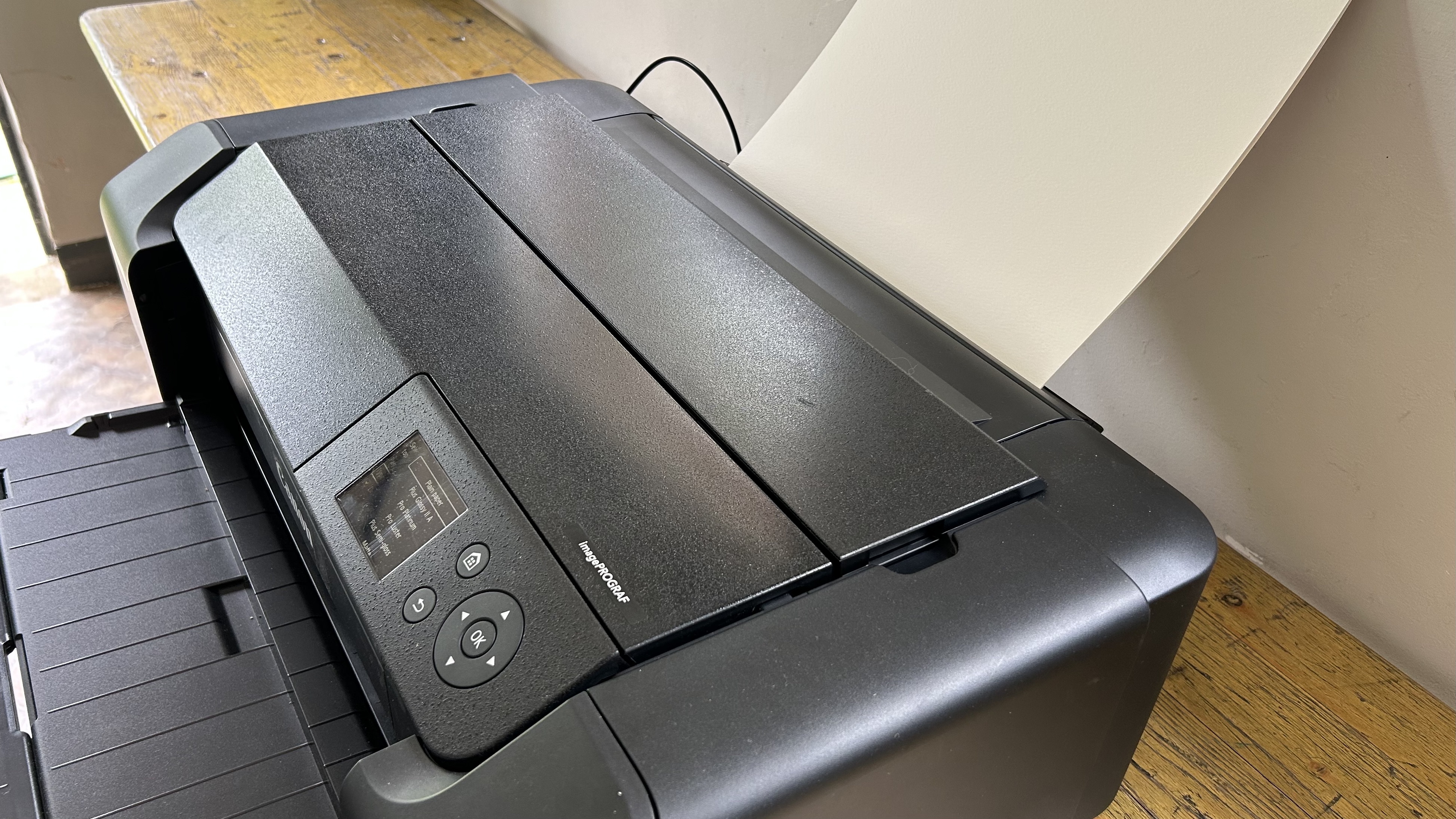
This is a pure photo printer, so there’s no scanner and few additional features. There’s no touchscreen, USB Host port or Bluetooth connectivity for instance and no auto-duplex mode. It might seem surprising that a printer costing over $700 can’t turn over a sheet of paper, until you understand that the Canon imagePROGRAF PRO-310 is all about image quality.
To achieve a maximum print resolution of 4,800 x 2,400 dpi a total of 7,680 nozzles spray minute droplets from ten individual inkjet cartridges. That’s 768 per color. In addition to the usual four colors, C/M/Y and photo black, you also have PC/PM/GY/R/CO and matt black. This makes for a much wider gamut and more natural and realistic shading.
Sign up to the TechRadar Pro newsletter to get all the top news, opinion, features and guidance your business needs to succeed!
Printing is rather slow at more than four minutes for one A3+ print, but Canon’s paper compatibility is especially versatile. The main input tray on top can handle any kind of paper from Canon’s 5” square photo paper to borderless A3+ prints of 13”x19”. Canon’s menu of paper presets offers no less than 29 choices, including Photo Paper Plus Glossy II, Premium Fine Art Rough and matt. You can load up to 100 sheets of A4 in this tray, or 50 sheets of A3.
There’s also a manual feed tray, which takes one single sheet at a time and here you can load envelopes or heavy card up to 380 g/m2 or 0.6mm thick. There’s actually a third input tray stored underneath the printer which makes it possible to print on blank CDs, for the few who still do that.
The only media this printer can’t handle is roll paper. Without the roll-adapters you find on some large format printers, you can only load sheets of cut paper. Fortunately, this does include 13-inch-wide banners of paper up to 70 inches long.
Canon imagePROGRAF PRO-310: Setup and operation
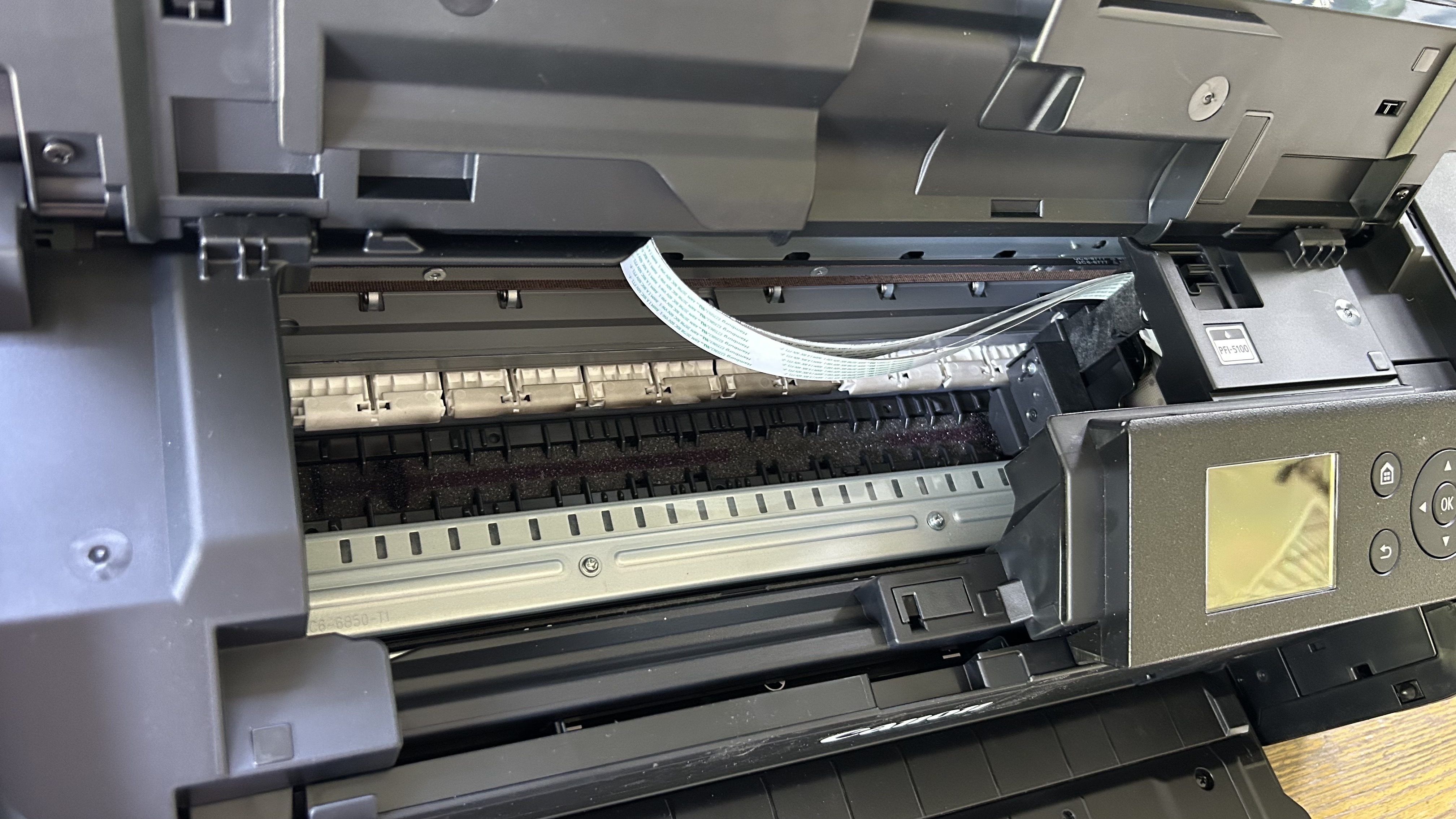
The setup procedure is the same as most other inkjet printers, but it takes slightly longer as there are so many cartridges to load. The supplied quick-start manual is very brief and clear, but Canon also has a helpful iOS/Android app to help you get going. This app makes it easy to connect your phone to the printer’s 5GHz Wi-Fi, then the printer to your local Wi-Fi network.
Having loaded the ten supplied cartridges, plus some paper and chosen a language for the on-screen menu, you then have to wait a few minutes while the inks are agitated before you can print your first page. It does this automatically from time to time to ensure the best ink flow.
It’s a pity there’s no touchscreen interface, but the 3-inch color display and familiar navigation wheel buttons are large enough that accessing the onscreen menu to make your paper selection or set security options is quite easy to do at the printer. It’s worth mentioning here that Canon has ditched all internal polystyrene packaging in favor of more sustainable cardboard.
Canon imagePROGRAF PRO-310: Performance
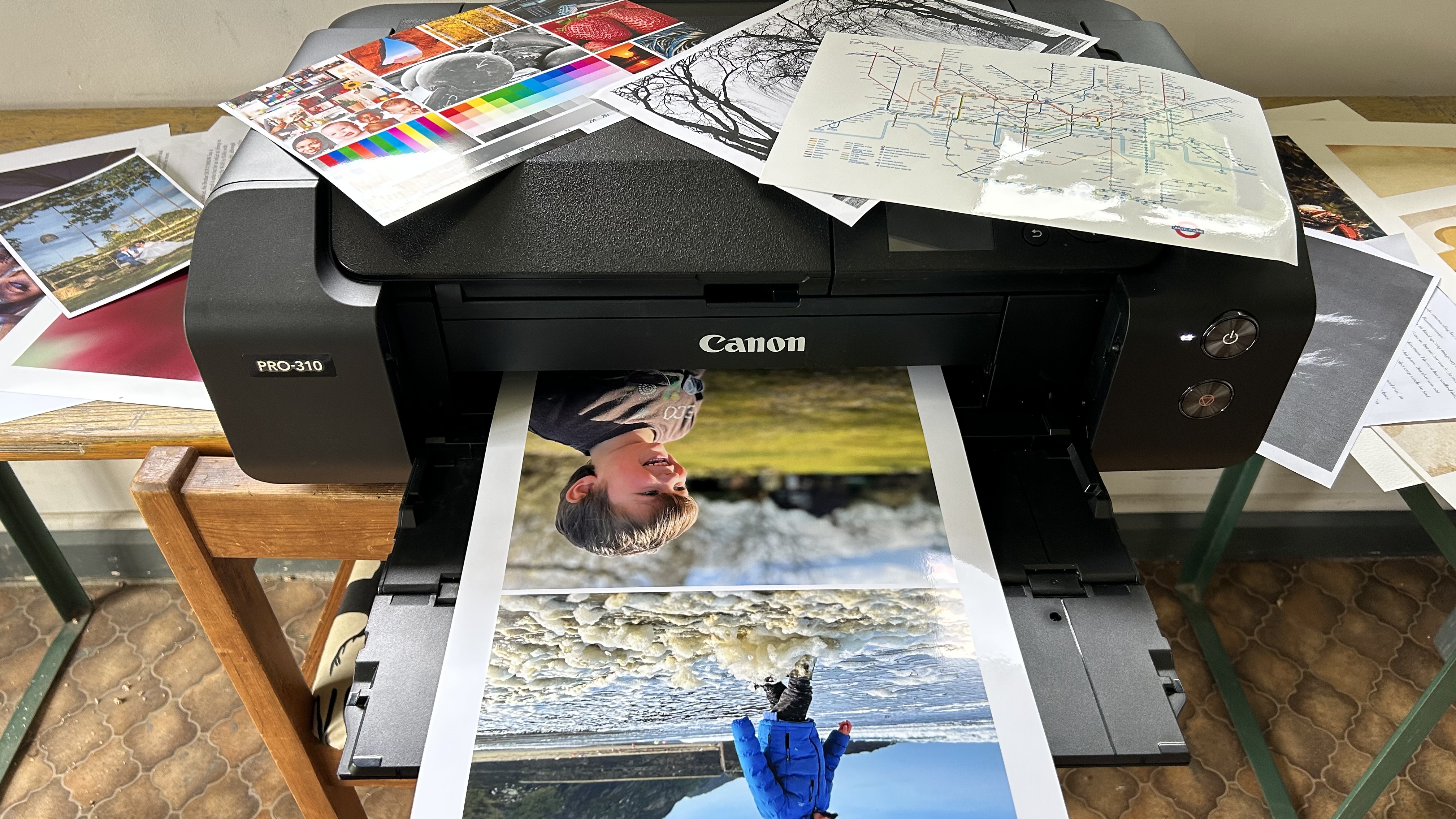
The Canon imagePROGRAF PRO-310 prints slowly, but the results are well worth waiting for. I found that connecting by USB cable (not included) was slightly faster than with Wi-Fi. Canon’s quoted print rate of just over four minutes for an A3+ photo proved accurate enough, and it’s the same speed if you print in black and white or color. While that sounds slow, we should remember that the printer is crunching the data of very large images and Canon’s L-COA PRO processor is actually working hard and more importantly, it’s not making mistakes.
If you were considering using this machine to double as your office printer for running out plain text documents, you might want to think again. Its black and white text output is unremarkable, except for its slowness. And without auto-duplex, you have to turn each sheet yourself. With color photos, on the other hand, the results are excellent across the board.
Black and white photos look especially impressive thanks to the use of matte black and grey inks in addition to photo black to help achieve strong contrast and improved greyscale. Color photos also look remarkably lifelike thanks to the wide color gamut, natural shading and fine detail reproduction. Just like the similar, Epson SureColor SC-P600, Canon is using nine inks to great effect. However, Canon’s additional cartridge containing the chroma optimizer appears to give it an advantage when it comes to the glossy finish. It really is hard to fault the Canon’s output onto coated photo paper and it makes the company’s longevity claim of up to 200 years light resistance believable.
Canon sells a very wide selection of printer paper, all of which is supported by this printer. I tried out Pro Platinum, Pro Luster, Plus Glossy II, Matte and Premium Fine Art. That last paper is quite thick and only works in the multi-purpose tray at the rear which has the flatter paper path. It’s hard to choose a favorite, but the glossier finishes tend to take the fullest advantage of this printer’s capabilities, in my opinion.
Canon imagePROGRAF PRO-310: Consumables
The big catch with this superb photo printer, is the cost of its consumables. Canon’s 5100 cartridges are specific to this model and it costs around US$130 (or £150) for a new set and they’re not big cartridges.
The volume is just 14.4ml which is a fraction the capacity of the larger Canon imagePROGRAF PRO-1100 at 80ml per cartridge. Canon’s estimates for the yield of these little cartridges is complicated by the fact that no two colors yield the same figure, but broadly speaking, you can hope to print up to fifty A3+ photos before needing to replace one or more of them.
That’s a higher ongoing cost than the Epson SureColor SC-P600, but Canon’s newly reformulated LUCIA PRO II pigment inks are industry leading in their longevity and the image quality looks superior. If you need to print a higher volume of photos, an ink tank alternative such as the excellent Epson EcoTank ET-8550 would be a better bet.
Canon imagePROGRAF PRO-310: Maintenance
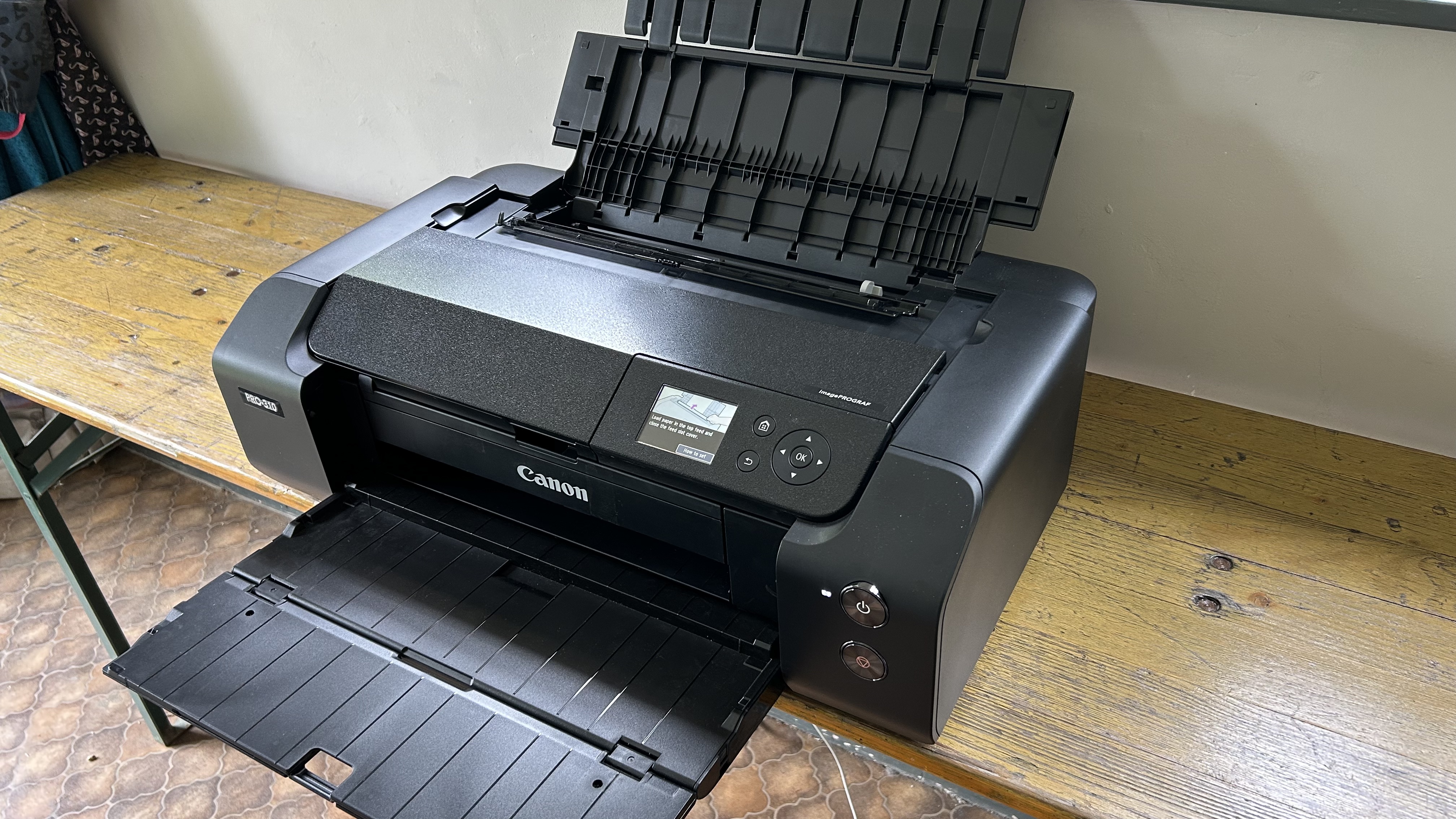
If left standing unused for long periods, the Canon imagePROGRAF PRO-310 is as susceptible to drying out as any other inkjet and it has the usual maintenance programs built into the menu to solve this. These are basically cleaning cycles that flushes ink through the 7,680 nozzles to unblock them and given the cost of the ink, you won’t want to run these cycles too often.
Canon imagePROGRAF PRO-310: Final verdict
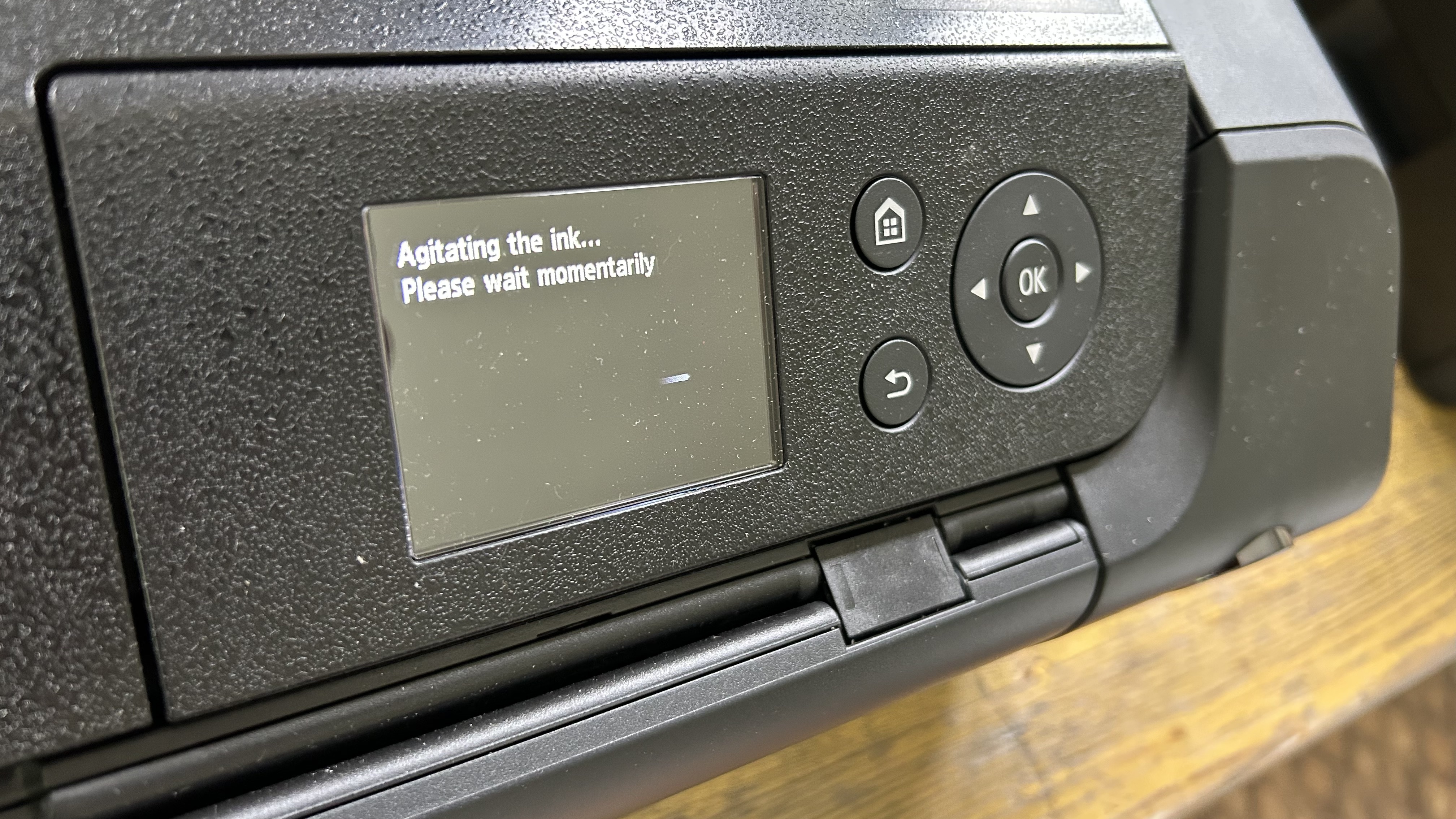
Any enthusiast or professional photographer will appreciate the print quality of this premium A3+ photo printer. The nine reformulated LUCIA PRO II pigment inks plus the innovative chroma optimizer combine to give you exceptionally realistic images on coated photo paper. I’ll have to take Canon’s word about the industry leading 200-year longevity of its prints, but they certainly look great.
The printer itself feels robust and well designed with only the essential features such as Wi-Fi with AirPrint compatibility. There’s no touchscreen, no USB Host port and it can’t even auto-duplex, but it does have a very wide media compatibility that takes in everything from blank CDs and 4x6-inch photo paper, to rough A3+ card and 70-inch-long banners. The only thing it can’t print on are paper rolls.
The ink cartridges specific to this model are small and expensive, but if you don’t mind paying for prints that look as good as a professional print shop and last even longer, the Canon imagePROGRAF PRO-310 is worth the investment.
For more print solutions, I've comprehensively tested the best small business printers and best home printers.

Jim has been evaluating printers for more than twenty years and has, to date, written over a hundred reviews for TechRadar Pro. From pocket printers to industrial dye sublimation, Jim has been there, run the tests and printed the t-shirt. His expertise extends to consumables (paper, ink, toner) and his printer buying guides make it easy to compare these essential peripherals.
You must confirm your public display name before commenting
Please logout and then login again, you will then be prompted to enter your display name.